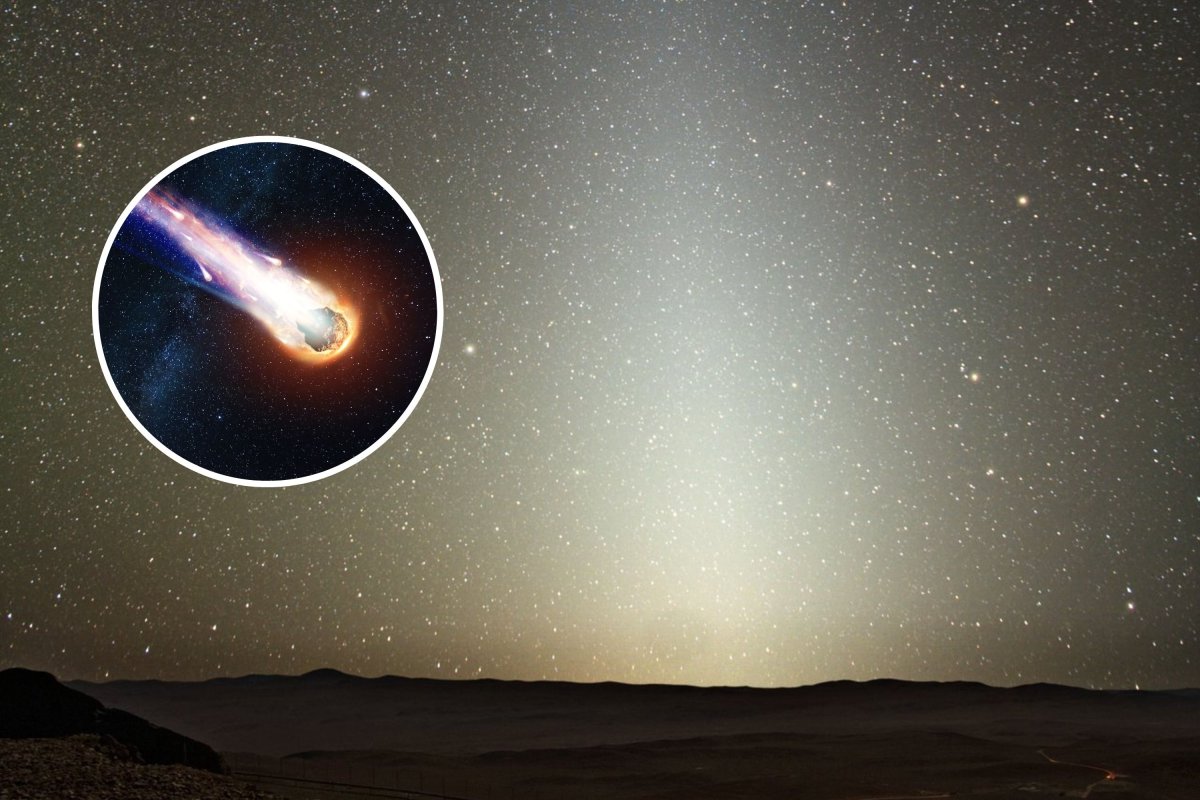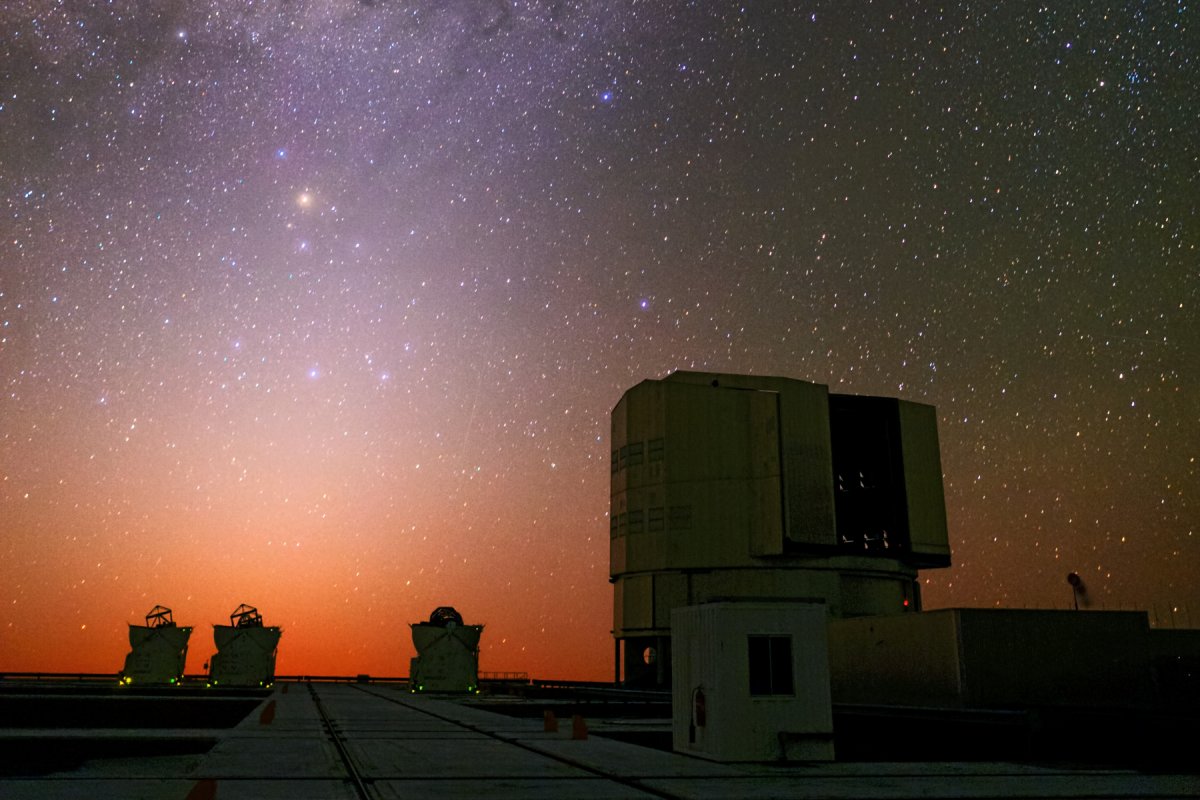A strange glow in the night sky, known as the "zodiacal light," is formed differently from how scientists first thought.
This bizarre glow is caused by minuscule particles of dust named meteoroids filling the space between planets—known as the zodiacal cloud—which scatters sunlight, forming a faint glimmer in the sky.
These meteoroids are released from comets as larger pebbles, with previous theories assuming that these pebbles became degraded into tiny particles during high-speed collisions. Now, however, new research in the journal Icarus suggests that the meteoroid pebbles become dust thanks to heat.
"Comets eject most debris as large sand-grain to pebble-sized particles, called meteoroids, that move in meteoroid streams and cause the visible meteors in our meteor showers," Peter Jenniskens, a meteor astronomer at the SETI Institute, said in a statement. "In contrast, the zodiacal cloud is mostly composed of particles the size of tobacco smoke that even radars have difficulty detecting as meteors."

When Earth passes through a cloud of these meteoroids left in the trail of a comet, it causes a meteor shower as the tiny particles burn up in our atmosphere.
"If it just so happens that the Earth runs through one of these streams of dust and debris laid down by a comet, we get a meteor shower," Jonti Horner, an astrophysics professor at the University of Southern Queensland, Australia, told Newsweek. "The smaller the grain, the fainter the meteor."
Scientists knew that these pebbles must be degrading into smaller and smaller particles, as meteor showers become less impressive with time.
"Meteor showers show us this loss of pebbles over time because older showers tend to contain fewer bright meteors than young showers," said Jenniskens. "We set out to investigate what is responsible."
In the paper, the researchers explained how they used a NASA-sponsored global network of video security cameras called "CAMS" to monitor the night sky for meteors in 10 countries.
"We developed software that detects meteors in videos recorded from different locations and then triangulates their trajectory in the atmosphere," meteor detection specialist Peter S. Gural said in the statement. "Meteors arriving from the same direction each day belong to a meteor shower."
They then investigated how fast each meteor shower was losing its larger pebbles to degradation.
"As part of this work, we determined the age of meteor showers from how much they had dispersed, and then examined how rapidly they were losing their large meteoroids compared to the smaller ones," Stuart Pilorz of the SETI Institute said.
The researchers then analyzed how close the meteoroid streams came to the sun. If pebbles were destroyed faster when they were closer to the sun, it would imply that collisions were indeed responsible for breaking them down.

"Because there is more comet dust closer to the sun, we had expected collisions there would pulverize the pebbles that much faster," said Jenniskens. "Instead, we found that the pebbles survived better than expected."
They also found that the pebbles were more frequently destroyed proportionally to the peak temperature in their orbit, implying that heat is most responsible for the breaking up of the large meteoroid pebbles.
"Here at Earth, we sometimes see that process in action when in a short time of say 10 seconds, we detect ten or twenty meteors in part of the sky, a meteor cluster, the result of a meteoroid having fallen apart by thermal stresses just before entering Earth's atmosphere," said Jenniskens.
Do you have a tip on a science story that Newsweek should be covering? Do you have a question about zodiacal light? Let us know via science@newsweek.com.
Uncommon Knowledge
Newsweek is committed to challenging conventional wisdom and finding connections in the search for common ground.
Newsweek is committed to challenging conventional wisdom and finding connections in the search for common ground.
About the writer
Jess Thomson is a Newsweek Science Reporter based in London UK. Her focus is reporting on science, technology and healthcare. ... Read more
To read how Newsweek uses AI as a newsroom tool, Click here.






